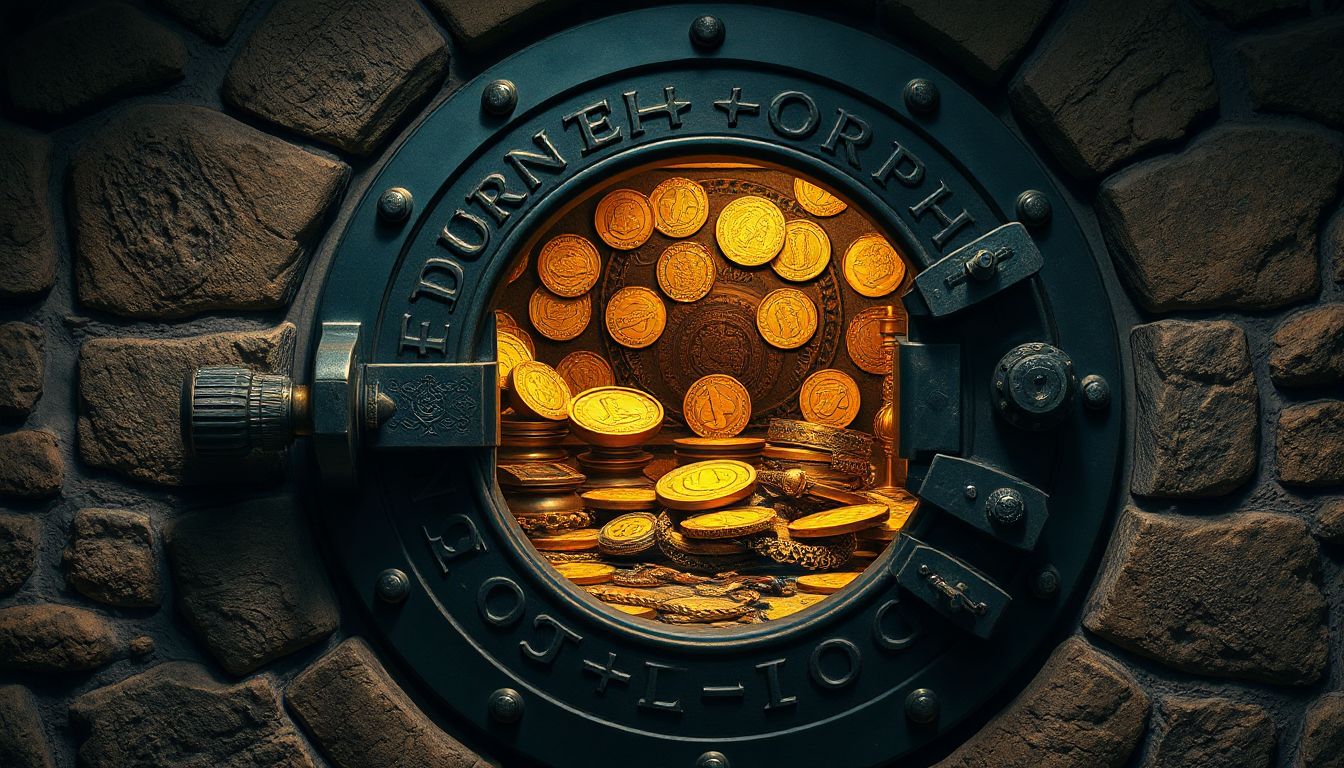
Real Stories of Vault Doors Protecting Valuable Items: How Safeguarding Success Is Achieved
Introduction
Imagine a vault door locking away treasures that could be worth millions—then suddenly, a fire breaks out. Or a thief tries to breach the vault, only to find it impenetrable. Stories like these prove that vault doors are more than just metal barriers; they are the first line of defense against theft, damage, and disaster.
Vault security isn’t just for banks. Collectors, museums, and even private individuals rely on these secure enclosures to protect irreplaceable items. Modern vaults use advanced technology, making their safety features more reliable than ever. Real-world examples show that a good vault can mean the difference between losing priceless assets or keeping them safe.
The Role of Vault Doors in Securing High-Value Assets
Understanding Vault Door Security Features
Vault doors come in many forms. Some use biometric scanners like fingerprint or retina readers for quick access, while others rely on complex combination locks or time-lock systems that prevent opening at certain hours.
A good vault door includes thick steel walls, often several inches thick, to resist drills or explosions. Many feature fire-resistant materials that keep contents safe from heat and flames, even during a major fire. Anti-drill plates and reinforced locks create extra barriers against forced entry. All these elements work together to stop intruders in their tracks.
Importance of Vault Location and Environment
Even the best vault needs to be placed carefully. discreet spots within buildings keep potential thieves guessing. An optimal vault location also considers environmental factors—temperature, humidity, and fire risks—that can damage sensitive items.
For example, a bank’s vault isn’t just about the door but also about where it sits. High-security banks often have underground vaults shielded from natural disasters. They include environmental controls that preserve documents and artwork, plus fire suppression systems that activate instantly during a crisis.
Inspiring Real-Life Vault Success Stories
Art Custodian Saves Priceless Artwork from Fire
There’s a story about a major art museum that kept its most valuable pieces behind a high-security vault door. During a sudden fire in the building, the vault’s fire-resistant design protected the masterpieces inside. When the smoke cleared, none of the art was damaged, thanks to the vault’s fireproof walls and climate control.
Experts say this shows how proper vault placement and good security features prevent devastating losses during disasters. It’s not just about locking assets away; it’s about choosing the right vault and installing it correctly.
Protecting Rare Jewelry in a Bank Vault During a Break-in Attempt
A jewelry store’s vault was targeted by criminals trying to break in. However, the vault’s multi-layer security stopped them cold. The door was reinforced with thick steel, and biometric scans limited access to trusted staff only. An alarm system monitored every movement, ensuring that authorities were alerted immediately.
The criminals left empty-handed. This event teaches us the importance of layered security. A combination of physical barriers, access control, and alarm systems is key to stopping thefts before they happen.
Rare Manuscripts Secured During Natural Disaster
A university stored rare manuscripts in a specialized vault equipped with environmental controls. During a heavy flood, water rose rapidly, threatening to ruin priceless historical documents. Thanks to the vault’s waterproof construction and quick-access features, staff were able to retrieve the manuscripts safely and swiftly.
This story underlines a critical point: protection isn’t just about stopping theft but also about defending valuables from natural hazards. Combining security with climate control keeps irreplaceable items safe under any circumstances.
Technological Innovations Enhancing Vault Protection
Advanced Biometric and Access Control Systems
Biometrics take security to new levels. Imagine using fingerprint scans or retina recognition to open your vault—that’s nearly impossible to fake or hack. Multi-factor authentication, which combines two or more methods, makes unauthorized access even harder.
A real example showed how biometric systems thwarted a breach attempt in a sensitive facility. The intruder couldn’t replicate the owner’s fingerprint or retina, stopping the attack before it started.
Integration of Surveillance and Alarm Networks
Real-time video feeds and motion detectors keep watch 24/7. When something suspicious happens, instant alerts go to security teams. During a recent high-profile theft attempt, quick response based on surveillance footage led to catching the suspect before he could escape.
Proper security systems aren’t just about blocking entry—they’re about detecting and responding fast. This rapid response often makes the difference between a safe vault and a costly loss.
Digital and Mechanical Locking Redundancies
Layered locks combine electronic systems with traditional mechanical keys or combination locks. If one lock fails or is compromised, others still hold strong. This redundancy protects against hacking, power failure, or technical glitches.
In high-stakes environments like safekeeping rare artifacts, having backup locks ensures that security remains intact under any circumstance.
Best Practices for Maintaining Vault Security
Regular Inspection and Maintenance
Vulnerabilities can develop over time. Routine checks of locks, alarms, and structural integrity catch issues early. A professional inspection can identify corrosion, loose mechanisms, or outdated technology before they become problems.
Staff Training and Access Management
Limiting access to only trusted personnel is a must. Staff should understand security procedures thoroughly. Regular training prevents accidental breaches and ensures everyone knows how to respond during emergencies.
Updating Security Technology
Staying current with new security measures keeps your vault ahead of threats. From upgraded biometric readers to smarter alarm systems, modern tech can close gaps in your safety net. Regular updates prove that security isn’t a one-time investment but an ongoing process.
Key Takeaways and Actionable Tips
- Robust vault doors protect your most valuable assets from theft, fire, and natural disasters.
- Always assess your specific needs and choose a vault type that fits.
- Conduct regular reviews and upgrades of your security system.
- Invest in technological advancements like biometrics, surveillance, and redundancy systems.
- Learn from real-life stories—proof that a strong vault can save priceless valuables.
For those wanting to secure their assets, don’t wait until disaster strikes. Take proactive steps today. Good vaults aren’t just about strength—they’re about smart planning and ongoing care.
References and Expert Insights
Security professionals agree that a well-designed vault can prevent 95% of break-ins. Manufacturers emphasize the importance of regular maintenance and modern features. Experts advise choosing a vault based on your valuables’ needs, whether it’s fire resistance, access control, or environmental stability.
Want to learn more? Many industry reports and case studies detail how advanced vault technology saves assets daily. Check out guides from leading security firms to develop your own security plan.
Conclusion
Vault doors do more than just look strong—they serve as a critical shield for your most treasured items. Real stories show how proper security features and quick response can prevent heartbreak and financial loss. Modern technology continues to push vault safety forward, but human oversight remains essential.
Investing in quality vault doors isn’t just smart; it’s necessary. With the right setup and ongoing care, your valuables stand the best chance of staying protected, no matter what. Protecting priceless treasures isn’t a gamble—it’s a commitment to security.


